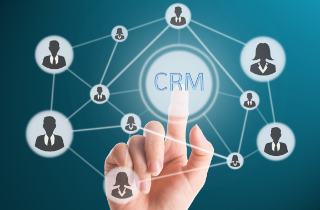Product Life Cycle Management
Tech Insights | 01 September 2022
After delivering quality services in several domains such as IT Service Management, Cloud Infrastructure Management, CRM Services & Analytics etc., ITOne Infotech is taking on yet another dynamic service delivery which has become the need of the hour for organizations all over the globe. This new service is Product Life Cycle Management.
What is Product Lifecycle Management?
Product Life Cycle Management (PLM), which ensures digital continuity throughout the extended enterprise from conception to product launch, is crucial to the strategy of digital transformation.
How will it help your organization?
By integrating your business operations with PLM software available today on a single platform, you can unify your product value chain with integrated business planning and supply chain execution to spur faster innovation and enhance how products are created, manufactured, maintained, and serviced.
Thanks to advancements in technology, businesses of all sizes can now use PLM to collect essential business data and combine tools and procedures to help all phases of product development which otherwise was a very expensive procedure and was restricted to only large companies.
The ‘design anywhere, manufacture anywhere’ business model is given a much-needed fundamental layer thanks to the PLM software. Additionally, because of its quick interface with ERP systems, businesses may get more use out of PLM platforms.
Phases of Product Life Cycle Management:
- Concept and Design :
This is the ideation phase, where a product’s specifications are established using data from competition analyses, market gaps, or client demands.
- Development :
The product will be given a thorough design, along with any required tool designs. The anticipated product is validated and analyzed during this phase, as well as a prototype is developed and put through field testing.
- Production and Launch :
The design and other elements are modified in response to feedback from the pilot to create a product that is ready for the market. After scaling up manufacturing, the new product is released and distributed to the market.
- Services and Support :
The time frame after the new product’s launch during which service and support are provided.
- Retirement :
The management of the product’s exit from the market at the end of its useful life, as well as any subsequent trials or incorporation into new concept ideas, is necessary.
How does PLM work?
A PLM system allows designers and engineers access to the crucial data they need in real time. By integrating CAD (computer-aided design), and integration with an ERP system, the solution streamlines project management and handles this product data across the whole product development lifecycle.
PLM discourages designers and engineers from working independently by providing them with access to outside information sources such as client and analyst feedback.
A PLM system also benefits teams beyond design and engineering. For efficient delivery of feedback early in the product development process, it can offer visibility to business stakeholders and/or suppliers as a “single source of truth.”
With the ITOne’s intellectual assets, we solve functional and enterprise challenges and innovate to support organizations in fundamentally altering how they manage their product-related activities.
Benefits of ITOne’s Product Life Cycle Management (PLM)-
- 1. Speed up execution
- 2. Increase delivery timeliness
- 3. Boost operational effectiveness
- 4. Reduce rework in production and design
- 5. Centralized data management
- 6. High data quality and security to ward off hackers and any inconsistencies
- 7. Agile supply chain because of effective inventory and logistics management and high visibility




















